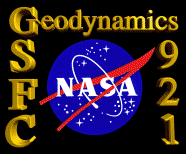


Paul Lowman attended the International Lunar Conference 2003 and presented several papers, in addition to providing the introduction for the meetings keynote speaker, former Apollo astronaut John Young.
 Paul Lowman has long been a strong advocate of
both returning to the Moon and using the Moon for
Astronomical studies. He has written numerous
articles on this subject, and presented the ideas in
a variety of forums. Last year he was asked to be
part of the organizing committee for International
Lunar Conference 2003, a week-long meeting in
Waikoloa, Hawaii. At that meeting he gave the
introduction for the meeting's keynote speaker,
former Apollo 16 astronaut John Young. He also
presented a paper of his own on "A Proposed
Robotic Astronomy Mission to the Lunar South
Polar Regions". The Proceedings of the ILC 2003
have now been published by the American Astronautical Society, and his paper, retitled "LSPECS: A Proposed Astrobiology Mission to the South Pole of the Moon" is one of the contributions.
Paul Lowman has long been a strong advocate of
both returning to the Moon and using the Moon for
Astronomical studies. He has written numerous
articles on this subject, and presented the ideas in
a variety of forums. Last year he was asked to be
part of the organizing committee for International
Lunar Conference 2003, a week-long meeting in
Waikoloa, Hawaii. At that meeting he gave the
introduction for the meeting's keynote speaker,
former Apollo 16 astronaut John Young. He also
presented a paper of his own on "A Proposed
Robotic Astronomy Mission to the Lunar South
Polar Regions". The Proceedings of the ILC 2003
have now been published by the American Astronautical Society, and his paper, retitled "LSPECS: A Proposed Astrobiology Mission to the South Pole of the Moon" is one of the contributions.
Lowman suggests using the Moon as a bed for submillimeter astronomy, following an idea proposed by Goddard's John Mather for a free-flying Submillimeter Probe of the Evolution of Cosmic Structure (SPECS). The astrobiology link comes from the ability of such an array to study giant molecular clouds as well as other astronomical sources of millimeter radiation, and from the idea of doing in situ chemical analysis of lunar polar materials, which might include ices deposited by comets.
|
 The idea of using the Moon as a base
for astronomical observations has a
long history, but is also controversial.
There are many groups supporting the
idea and others suggesting the same
kind of observations can be done more
easily from space, perhaps from one of
the Earth-Moon or Earth-Sun Lagrangian
points. Independent groups are also
looking at the possibility of robotic lunar
telescopes of the sort described by Lowman. Space Age Publishing, a leading sponsor of the International Lunar Conference 2003 and owner of Lunar Enterprise Corporation, has actually released a Request for Proposals for concepts for an International Lunar Observatory. They propose putting a 1-3 m dish antenna on the Moon as early as 2006-2007. In
their view such a facility could be
built for $50-75 million, perhaps
through a combination of support
from the six major space-faring
nations and investments.
The idea of using the Moon as a base
for astronomical observations has a
long history, but is also controversial.
There are many groups supporting the
idea and others suggesting the same
kind of observations can be done more
easily from space, perhaps from one of
the Earth-Moon or Earth-Sun Lagrangian
points. Independent groups are also
looking at the possibility of robotic lunar
telescopes of the sort described by Lowman. Space Age Publishing, a leading sponsor of the International Lunar Conference 2003 and owner of Lunar Enterprise Corporation, has actually released a Request for Proposals for concepts for an International Lunar Observatory. They propose putting a 1-3 m dish antenna on the Moon as early as 2006-2007. In
their view such a facility could be
built for $50-75 million, perhaps
through a combination of support
from the six major space-faring
nations and investments.
|
 If future manned missions
to the Moon can provide a long-
term infrastructure, the idea of a
permanent lunar observatory is
even more attractive.
If future manned missions
to the Moon can provide a long-
term infrastructure, the idea of a
permanent lunar observatory is
even more attractive.
|
![]() Back to Geodynamics Science Highlights
Back to Geodynamics Science Highlights
Responsible NASA official: Dr. Herbert Frey